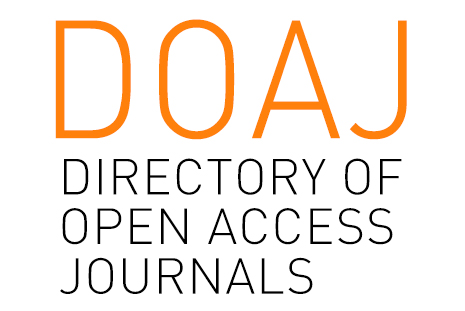Digital health: development of a mobile application for tinnitus identification and intervention
Saúde digital: desenvolvimento de um aplicativo móvel para identificação e intervenção no zumbido
DOI:
https://doi.org/10.17765/2176-9206.2025v18e13146Keywords:
Mobile Applications, Information Technology, Telemedicine, TinnitusAbstract
Tinnitus affects a large portion of the population and can impair an individual's quality of life and mental health. Various treatment options are available to alleviate this symptom. Mobile applications have become an integral part of users' lives, including in the healthcare field. Objective: to present the development of a free mobile application designed to serve as a tool for the assessment and intervention of patients with tinnitus. Method: The application was developed in 2023 and followed three stages: planning, development, and practical application, using the JavaScript programming language. Results: The Zumit app includes four main features: (1) information, (2) user identification, (3) evaluation of tinnitus characteristics using the Tinnitus Handicap Inventory and Visual Analog Scale, and (4) intervention through auditory training. Conclusion: Zumit offers an innovative and accessible solution for assessing and managing tinnitus, with the potential to be widely adopted in clinical practice.Downloads
References
Ferreira RJS, Rosa MRD. Aspectos gerais do Zumbido. In: Ferreira RJS, Rosa MRD, editors. Perspectivas terapêuticas para o zumbido : um olhar multidisciplinar. 1st ed. João Pessoa: Editora UFPB; 2023. p. 11–31.
Liu YW, Wang B, Chen B, Galvin 3rd JJ, Fu QJ. Tinnitus impairs segregation of competing speech in normal-hearing listeners. Sci Rep [Internet]. 2020;10(1):19851. http://dx.doi.org/10.1038/s41598-020-76942-1
Moreira HG, Bruno RS, Oppitz SJ, Sanfins MD, Garcia MV. Zumbido crônico: análise das contribuições clínicas de diferentes avaliações audiológicas. Audiology - Communication Research. 2022;27. https://doi.org/10.1590/2317-6431-2022-2660pt
Kutyba J, Gos E, Jędrzejczak WW, Raj-Koziak D, Karpiesz L, Niedziałek I, et al. Effectiveness of tinnitus therapy using a mobile application. Eur Arch Otorhinolaryngol [Internet]. 2022;279(3):1257–67. http://dx.doi.org/10.1007/s00405-021-06767-9
Barboza HN, Lima MC de, Ferreira RJDS, Rosa MRD da, Araújo AL de LES, Acioly A de SG. Avazum app usability testing. Codas [Internet]. 2023;35(5):e20220103. http://dx.doi.org/10.1590/2317-1782/20232022103pt
Silveira MA, Nóbrega MS, Goyatá SLT, Ribeiro PM, Giacomelli B, Moreira D da S. Aplicativos móveis em saúde baseados no método Design Instrucional Contextualizado: revisão integrativa. Contrib Cien Social. 2023 Aug 15;16(8):11233–53. https://doi.org/10.55905/revconv.16n.8-127
Barra DCC, Paim SMS, Sasso GTMD, Colla GW. Métodos para desenvolvimento de aplicativos móveis em saúde: revisão integrativa da literatura. Texto & Contexto - Enfermagem. 2017;26. https://doi.org/10.1590/0104-07072017002260017
Kelders SM, Sommers-Spijkerman M, Goldberg J. Investigating the direct impact of a gamified versus nongamified well-being intervention: An exploratory experiment. J Med Internet Res [Internet]. 2018;20(7):e247. http://dx.doi.org/10.2196/jmir.9923
Schmidt-Kraepelin M, Toussaint PA, Thiebes S, Hamari J, Sunyaev A. Archetypes of gamification: Analysis of mHealth apps. JMIR Mhealth Uhealth [Internet]. 2020;8(10):e19280. http://dx.doi.org/10.2196/19280
Kalle S, Schlee W, Pryss RC, Probst T, Reichert M, Langguth B, et al. Review of smart services for tinnitus self-help, diagnostics and treatments. Front Neurosci [Internet]. 2018;12:541. Available from: http://dx.doi.org/10.3389/fnins.2018.00541
Deshpande AK, Shimunova T. A comprehensive evaluation of tinnitus apps. Am J Audiol [Internet]. 2019;28(3):605–16. http://dx.doi.org/10.1044/2019_AJA-18-0135
Figueiredo RR, Azevedo AA de, Oliveira P de M. Análise da correlação entre a escala visual-análoga e o Tinnitus Handicap Inventory na avaliação de pacientes com zumbido. Revista Brasileira de Otorrinolaringologia. 2009;75. https://doi.org/10.1590/S0034-72992009000100012
Ferreira RJ dos S, Barboza HN, Paiva SF de, Araújo AL de L e S, Rosa MRD da. Intensidade e desconforto do zumbido pós-covid-19: um estudo comparativo. Audiology - Communication Research. 2023;28. https://doi.org/10.1590/2317-6431-2022-2705pt
Lewis S, Chowdhury E, Stockdale D, Kennedy V, Committee G. Assessment and management of tinnitus: summary of NICE guidance. BMJ [Internet]. 2020;368:m976. http://dx.doi.org/10.1136/bmj.m976
Abouzari M, Goshtasbi K, Sarna B, Ghavami Y, Parker EM, Khosravi P, et al. Adapting personal therapies using a mobile application for tinnitus rehabilitation: A preliminary study. Ann Otol Rhinol Laryngol [Internet]. 2021;130(6):571–7. http://dx.doi.org/10.1177/0003489420962818
Lima DO, Araújo AMGD de, Branco-Barreiro FCA, Carneiro C da S, Almeida LNA, Rosa MRD da. Auditory attention in individuals with tinnitus. Braz J Otorhinolaryngol. 2020;86. https://doi.org/10.1016/j.bjorl.2019.01.011
Tugumia D, Samelli AG, Matas CG, Magliaro FCL, Rabelo CM. Programa de treinamento auditivo em portadores de zumbido. Codas. 2016;28. https://doi.org/10.1590/2317-1782/20162015113
Bertuol B, Araújo T de M, Biaggio EPV. Treinamento auditivo: zumbido e habilidades auditivas em idosos com perda auditiva. Distúrbios da Comunicação [Internet]. 2020 Jan 20;31(4):538–48. https://doi.org/10.23925/2176-2724.2019v31i4p538-548
Downloads
Published
How to Cite
Issue
Section
License
Copyright (c) 2024 Saúde e Pesquisa

This work is licensed under a Creative Commons Attribution 4.0 International License.
A submissão de originais para a revista Saúde e Pesquisa implica na transferência da Carta Concessão de Direitos Autorais, pelos autores, dos direitos de publicação digital para a revista após serem informados do aceite de publicação.A Secretaria Editorial irá fornecer da um modelo de Carta de Concessão de Direitos Autorais, indicando o cumprimento integral de princípios éticos e legislação específica. Os direitos autorais dos artigos publicados nesta revista são de direito do autor, com direitos da revista sobre a primeira publicação. Os autores somente poderão utilizar os mesmos resultados em outras publicações, indicando claramente a revista Saúde e Pesquisa como o meio da publicação original. Em virtude de tratar-se de um periódico de acesso aberto, é permitido o uso gratuito dos artigos, principalmente em aplicações educacionais e científicas, desde que citada a fonte. A Saúde e Pesquisa adota a licença Creative Commons Attribution 4.0 International.
A revista se reserva o direito de efetuar, nos originais, alterações de ordem normativa, ortográfica e gramatical, com vistas a manter o padrão culto da língua e a credibilidade do veículo. Respeitará, no entanto, o estilo de escrever dos autores. Alterações, correções ou sugestões de ordem conceitual serão encaminhadas aos autores, quando necessário. Nesses casos, os artigos, depois de adequados, deverão ser submetidos a nova apreciação. As opiniões emitidas pelos autores dos artigos são de sua exclusiva responsabilidade.

















